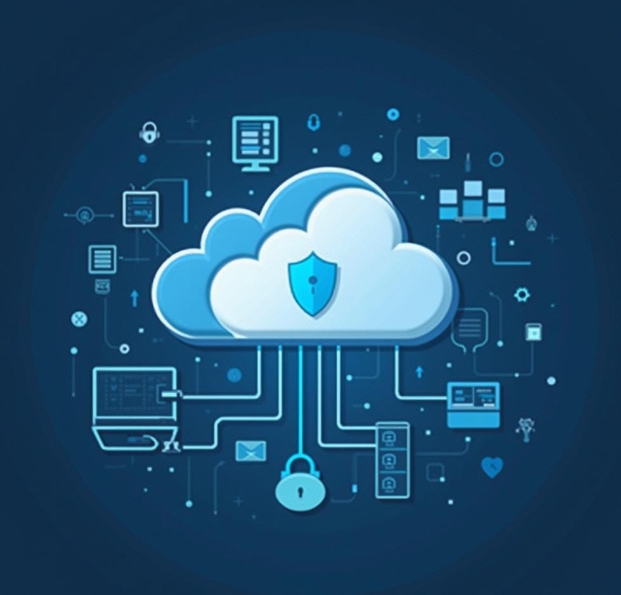Enterprise Cloud Computing Security: How to Address Common Security Threats
- latest articles
- 1.DApp Development & Customization: Merging Diverse Market Needs with User Experience 2.Analysis of the Core Technical System in DApp Project Development 3.How to achieve cross-chain interoperability in Web3 projects? 4.How does the tokenization of points reconstruct the e-commerce ecosystem? 5.How to Set and Track Data Metrics for a Points Mall? 6.What is DApp Development? Core Concepts and Technical Analysis 7.Inventory of commonly used Web3 development tools and usage tips 8.Development of a Distribution System Integrated with Social E-commerce 9.Six Key Steps for Businesses to Build a Points Mall System 10.What is DApp Development? A Comprehensive Guide from Concept to Implementation
- Popular Articles
- 1.Future Trends and Technology Predictions for APP Development in 2025 2.Analysis of the DeFi Ecosystem: How Developers Can Participate in Decentralized Finance Innovation 3.From Zero to One: How PI Mall Revolutionizes the Traditional E-commerce Model 4.DAPP Development | Best Practices for Professional Customization and Rapid Launch 5.Recommended by the Web3 developer community: the most noteworthy forums and resources 6.From Cloud Computing to Computing Power Leasing: Building a Flexible and Scalable Computing Resource Platform 7.How to Develop a Successful Douyin Mini Program: Technical Architecture and Best Practices 8.Shared Bike System APP: The Convenient Choice in the Era of Smart Travel 9.How to Create a Successful Dating App: From Needs Analysis to User Experience Design 10.From Design to Development: The Complete Process of Bringing an APP Idea to Life
With the rapid development of information technology, cloud computing has become a critical infrastructure for the operation and growth of modern enterprises. From startups to multinational corporations, an increasing number of businesses are adopting cloud computing technologies to enhance data storage efficiency, reduce costs, and achieve more flexible business expansion. However, as cloud computing becomes more widespread, the associated security threats are also on the rise, presenting challenges that enterprises must confront and resolve. This article will discuss common security threats in cloud computing environments and introduce effective strategies to counter these threats, thereby protecting corporate data and system security.
I. Security Threats in Cloud Computing
Security issues in cloud computing environments are often more complex and diverse than those faced by traditional data centers. This is because cloud computing is inherently a shared resource model, where data and computing tasks are typically handled via remote networks. Common security threats in cloud computing mainly include the following categories:
1. Data Breaches
Data breaches are one of the most severe threats in cloud computing security. Since cloud computing stores a company's sensitive data on third-party servers, businesses often lack complete control over the storage and processing of their data. If the cloud service provider's security measures are inadequate, or if hackers successfully infiltrate the cloud platform, data breaches can occur. For enterprises, a data breach can not only result in financial losses but also damage the company's reputation and lead to legal disputes.
2. Data Loss
Data loss refers to the inability to recover data due to failures in cloud services, hardware malfunctions, or human errors. Although cloud computing offers redundancy and backup mechanisms, it cannot eliminate all potential risks. In the event of data loss, if a company lacks adequate backup and recovery mechanisms, it could face severe consequences, potentially even leading to business shutdown.
3. Account and Service Hijacking
Account and service hijacking is a common security threat in cloud computing. Attackers can gain unauthorized access to and manipulate data, applications, and services in the cloud by obtaining administrator accounts or user login credentials. Once attackers control a cloud account, they can alter configurations, steal data, or even completely delete or tamper with business data. This type of attack is often covert, making it difficult for companies to detect promptly.
4. Insider Threats
In addition to external attacks, insiders (such as employees, contractors, etc.) can also be sources of security threats. Due to the highly shared nature of data and resources in cloud computing environments, if insiders misuse their privileges or inadvertently cause data leaks, it can pose significant security risks to the company. The risk of insider threats is further amplified when access controls for cloud services are not stringent.
5. Denial of Service (DDoS) Attacks
Denial of Service (DDoS) attacks are methods that overwhelm target systems with massive malicious traffic, rendering them inoperable. In cloud computing environments, DDoS attacks can significantly impact the entire cloud platform, leading to service unavailability and even data loss and business disruption. Attackers launch these attacks from large-scale distributed networks, making the cloud platform unable to respond to legitimate requests. Although cloud service providers offer some protective measures, DDoS attacks remain a major challenge for cloud computing security.

II. Cloud Computing Security Protection Measures
To address the various security threats mentioned above, enterprises need to implement a series of effective protective measures to ensure the security of their cloud computing environments. The following are several key security protection measures:
1. Data Encryption
Data encryption is one of the most fundamental methods to prevent data breaches and loss. Companies can use encryption technologies to ensure that data remains encrypted during both storage and transmission. Even if data is stolen by hackers, the actual content cannot be deciphered. Cloud service providers typically offer encryption services, but companies still need to ensure the use of strong encryption algorithms and adopt end-to-end encryption to protect all data transfers from the client to the cloud server.
2. Strengthening Identity Authentication and Access Control
To prevent account and service hijacking, enterprises should implement strict identity authentication and access control measures. Using multi-factor authentication (MFA) is a crucial method to prevent unauthorized access. By requiring users to provide multiple verification factors (such as passwords, SMS codes, fingerprint recognition, etc.) during login, even if attackers obtain passwords, they cannot easily access the company's cloud services. Additionally, companies should strictly control permissions for different users and roles, ensuring that individuals can only access resources they are authorized to use, thereby preventing insider misuse of privileges.
3. Data Backup and Disaster Recovery
To mitigate the risk of data loss, enterprises must establish comprehensive data backup and disaster recovery mechanisms. By regularly backing up critical data in cloud services and storing backup data in secure locations, businesses can quickly restore operations in the event of data loss. Companies should also confirm backup strategies and recovery processes with their cloud service providers to ensure rapid operational recovery during emergencies.
4. Regular Security Audits and Vulnerability Scanning
Vulnerabilities and weaknesses in cloud computing environments can be entry points for hacker attacks, making regular security audits and vulnerability scans essential. Companies can use vulnerability scanning tools to detect security flaws in the cloud platform and promptly address these issues. Furthermore, security audits help companies understand the security status of their cloud environments, identify potential risks, and take appropriate protective measures.
5. Deploying Distributed Firewalls and DDoS Protection
For DDoS attacks in cloud computing environments, enterprises can deploy distributed firewalls and DDoS protection systems to enhance security. Cloud service providers usually offer some level of DDoS protection, but companies can additionally deploy protective devices or services based on business needs to better defend against large-scale distributed attacks.
6. Employee Security Awareness Training
Given the existence of insider threats, companies should regularly conduct security awareness training for employees. Employees are a critical component of the corporate security framework; enhancing their security awareness and defensive capabilities can effectively reduce risks associated with human error and insider threats. Companies should educate employees on how to identify phishing emails, use cloud services securely, manage account passwords, etc., to prevent security vulnerabilities when using cloud services.
7. Partnering with Trustworthy Cloud Service Providers
Choosing a reliable cloud service provider is key to ensuring cloud computing security. When selecting a cloud service provider, companies should thoroughly evaluate its security measures, including data protection practices, compliance, security certifications, disaster recovery capabilities, etc. Opting for cloud service providers with international certifications like ISO 27001 can offer higher security assurance for businesses.

III. Conclusion
The application of cloud computing technology brings significant convenience and efficiency improvements to enterprises, but at the same time, cloud security issues have become critical challenges that businesses must address. By understanding and identifying common security threats in cloud computing environments and implementing appropriate protective measures, companies can effectively reduce security risks and ensure the safety of their cloud computing environments. Enterprises should continuously strengthen security management, enhance employee security awareness, choose trustworthy cloud service providers, and work collaboratively to build a secure and stable cloud computing environment, providing solid technical support for business growth.
-

Applications and Challenges of Cloud Computing in the Internet of Things (IoT)
With the continuous advancement of information technology, cloud computing and t···
-

Integration of Cloud Computing and Artificial Intelligence: Enhancing Intelligent Applications
With the rapid advancement of technology, cloud computing and artificial intelli···
-

Data Security and Privacy Protection in Cloud Computing Applications
With the continuous advancement of information technology and the rapid developm···

 Blockchain
Blockchain










